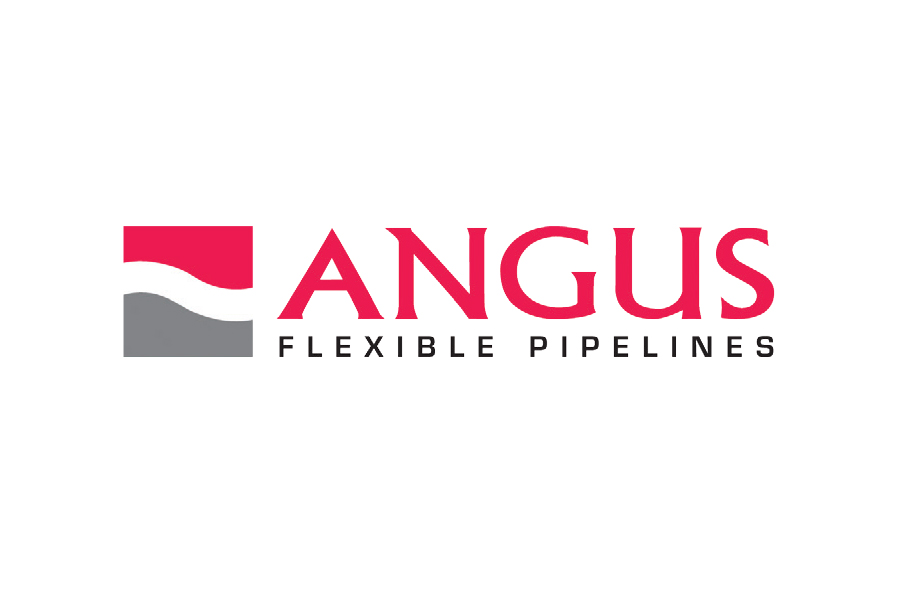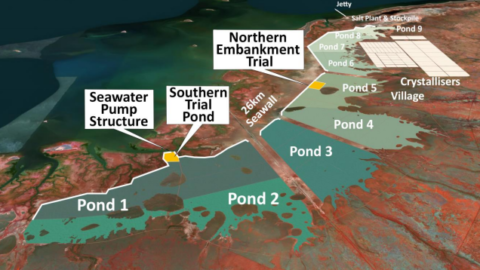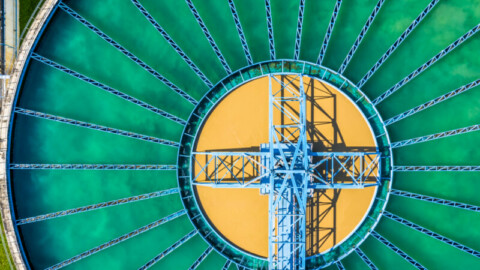The Federal Government has handed down its 2021-22 Budget, with funding allocated for agriculture, and water and energy infrastructure.
The Federal Government will provide over $850 million to support the Australian agriculture industry to reach its goal of $100 billion by 2030.
The 2021-22 Budget delivers substantial new investment to drive the competitiveness, growth and resilience of the Australian agriculture industry.
The Federal Government’s focus remains on delivering targeted measures for Australia’s farmers, fishers and foresters in the Agriculture 2030 2021-22 Budget package to support industry reach its goal.
Resources
The Federal Government said it will invest in a global strategy to highlight the quality, strength and reliability of Australia as a supplier of crucial resources and energy to the world while supporting companies to diversify and develop new markets.
Supporting junior explorers is expected to help the industry make the next big discoveries. The resources sector employs more than 260,000 people, with many of these jobs in regional Australia. More than a million Australians rely on the sector indirectly.
The 2021-22 Budget includes:
- $100 million in fiscal balance terms to extend the Junior Minerals Exploration Incentive for four years from 1 July 2021, to encourage exploration and development of new deposits and to ensure a strong investment pipeline for development across regional Australia
- New funding to implement the Government’s Strategic Basin Plans, including $15.7 million to support Gas Field Trials in the North Bowen and Galilee Basins, and $2.2 million for the Northern Land Council to help provide better services to Traditional Owners in the Beetaloo Basin
Northern Australia
The Government is investing $189.6 million over five years for the Next Five Year Plan for Northern Australia, with a focus on job creation, stronger digital connectivity, and support for businesses to scale up and diversify.
Our North, Our Future: 2021-2026 represents the next phase of the 20-year framework set out in the 2015 White Paper on Developing Northern Australia, to build on the economic potential of the north and to create jobs and opportunities to help attract people to live and do business in the north.
Measures include:
- $9.3 million over five years to pilot the targeted Regions of Growth (ROG) program in four locations: Beetaloo Basin to Darwin; Broome to Kununurra to Darwin; Cairns to Gladstone; and Mount Isa to Townsville. The program will target investment to the strengths of each region and help identify future geographical areas of economic potential
- $111.9 million over five years for a Northern Australia Development Program. The program will support northern Australian businesses to scale up and diversify by providing co-investment funding to businesses for activities including infrastructure, assets, feasibility studies and business planning
Our North, Our Future: 2021-2026 builds on the Federal Government’s plans to drive job creation and industry growth, supporting national recovery efforts from the impacts of the COVID-19 pandemic.
Water
In the water portfolio, Minister for Resources, Water and Northern Australia, Keith Pitt, said Budget measures are centred on three key areas to set Australia up for the future:
- Providing practical support to farmers who experienced drought to improve their on-farm water infrastructure in partnership with states
- Reforming water markets to ensure water users could have confidence in their integrity and operation
- Improving Murray–Darling Basin modelling to build the confidence of governments, water users and communities in planning for an uncertain future
“We have extended the On-farm Emergency Water Infrastructure Rebate Scheme for 12 months until June 2022, to ensure drought-affected farmers can access the $50 million in rebate funding secured through the 2020-21 Budget,” Mr Pitt said.
“We will form an expert panel to progress important reforms to Murray–Darling Basin water markets in ways that support water users while improving market efficiency, information and governance.
“Reforming our water markets will need strong collaboration between governments, as well as with communities.
“And we’re committed to developing a state-of-the-art modelling capability for the whole Basin to ensure farmers, communities and governments can make decisions confident in the data they rely on.
“These measures are on top of the $270 million Murray–Darling Communities Investment Package announced last year to put communities and jobs at the heart of Basin Plan implementation. In 2021-22 $130 million of that is committed to support our communities.
“We have also closed the Water Efficiency Program and ruled out water buybacks, diverting over $1.3 billion to focus on off-farm efficiency projects.
“Off-farm water recovery means we can actually progress our river health targets and, unlike on-farm programs we do not reduce water availability in the consumptive pool.”
The 2021-22 Budget invests up to a further $258.0 million, including up to $160 million through the National Water Grid Connections pathway, from the $3.5 billion National Water Grid Fund towards the construction of new and augmented water infrastructure projects, building a more resilient and secure Australia.
The Government’s ongoing investment in water infrastructure builds on the eight construction projects already completed since the establishment of the National Water Grid Authority in late 2019 and brings the total number of construction projects in the investment pipeline to 30.
The new and augmented construction projects being funded in partnership with states include:
- Eurobodalla Southern Storage (New South Wales) – $51.2 million
- Werribee Irrigation District Modernisation (Victoria) – $11 million
- Recycled Water on the Bellarine (Victoria) – $5.5 million
- Warwick Recycled Water for Agriculture – Recycled Water Treatment Upgrade (Queensland) – $0.5 million
- An additional $7.5 million for Rookwood Weir to deliver water security in North Queensland by raising the weir wall a further 700mm to deliver an additional 10,000 megalitres. This brings total Australian Government investment in the project to $183.6 million.
Gas infrastructure and emissions reduction
In total, more than $1.8 billion has been allocated in the 2021-22 Budget for the energy sector, with $58.6 million of that going towards the gas sector.
As well as a suite of electricity funding, the Budget initiatives to drive Australia’s gas-fired recovery include:
- Up to $38.7 million to support critical gas infrastructure projects to alleviate the forecast gas supply shortfalls
- $5.6 million to further strengthen the Federal Government’s gas system planning framework through delivery of the National Gas Infrastructure Plan
- $6.2 million to design, consult and implement reforms to accelerate the development of the Wallumbilla Gas Supply Hub
- $4.6 million to develop initiatives that empower gas reliant businesses to negotiate competitive outcomes in their gas supply agreements
- $3.5 million to design and implement a framework to facilitate Commonwealth support for medium to long-term gas infrastructure to secure Australia’s future gas supply
The Budget also sets out measures to further strengthen Australia’s long-term fuel security, building on the Government’s investment in the 2020-21 Budget, including:
- A refinery production payment to help maintain Australia’s refining capability
- Support to assist the refiners to conduct infrastructure upgrades, subject to consultation with industry
- $50.7 million to establish a new fuel security framework, including for the implementation and monitoring of the minimum stockholding obligation and the production payment, ensuring industry complies
- New initiatives in the Budget will support investment in new and emerging low-emissions technologies prioritised under the Government’s Technology Investment Roadmap, collaborate internationally on achieving technology breakthroughs, lower energy costs and create more than 6,000 jobs.
In total, $1.2 billion has been allocated to establish Australia at the forefront of low emissions technology innovation and commercialisation. For more information, click here.
Energy response a mixed bag
The response to the Budget from the energy industry has been mixed.
APPEA Chief Executive, Andrew McConville, said support for gas-related strategic basins is a big tick, as is the announcement for new hydrogen and carbon storage initiatives to help lower emissions.
“Increased funding for gas infrastructure of $173.6 million in the Northern Territory on top of the $58.6 million will mean more supply for the domestic market and that will help keep prices competitive,” Mr McConville said.
Clean Energy Council Chief Executive, Kane Thornton, said the Budget was a missed opportunity for the Federal Government to embrace Australia’s renewable energy sector and follow the lead of international, state and territory counterparts to use the clean energy transition to drive job creation and economic recovery.
“If this truly is the infrastructure budget, Infrastructure Australia has identified that there is a need for major transmission upgrades to supply network access to renewable energy zones as a high priority, particularly in light of retiring thermal generation,” Mr Thornton said.
“The lack of transmission investment is now one of the most critical challenges facing Australia’s energy industry.
“It’s disappointing that in a ‘nation-building’ infrastructure budget, upgrades that will enable the access and security of clean, low-cost power have not been prioritised.”
















